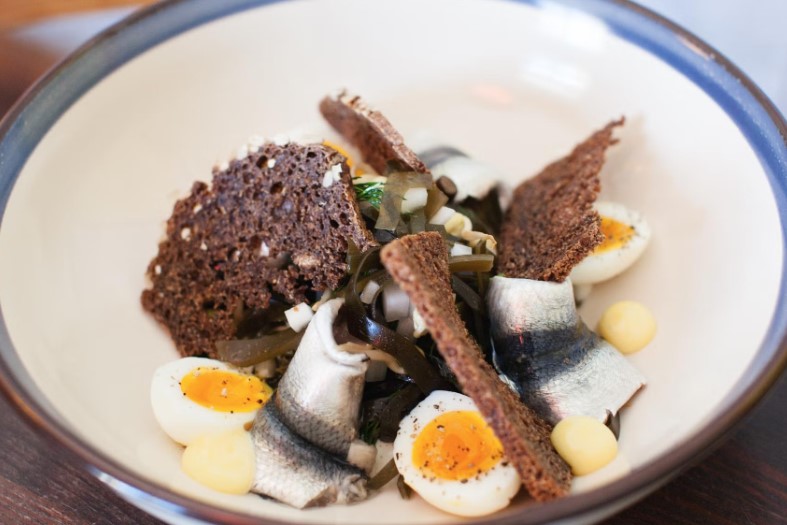Introduction: Traditional Estonian cuisine
Estonia is a small country in Northern Europe with a rich history and culture. The country’s cuisine is a blend of different influences, including Scandinavian, Russian, and German. Traditional Estonian cuisine is known for its simplicity, hearty portions, and the use of local ingredients, such as fish, wild berries, and mushrooms.
Fermented foods have always played an important role in Estonian cuisine. They are a key part of the country’s culinary heritage and are enjoyed by locals and visitors alike. Fermentation is used to preserve foods and enhance their flavor, making them a staple in Estonian homes for centuries.
Fermentation in Estonian cuisine: Brief history
Fermentation has been a part of Estonian cuisine for centuries. It was used as a method of preserving food during the long, cold winters when fresh produce was scarce. Fermentation also helped to add flavor and nutrition to the food.
Traditionally, fermented foods were made at home by the women of the household. They used a variety of methods, including lacto-fermentation, sourdough fermentation, and alcoholic fermentation. Each method produced unique flavors and textures that were prized by the Estonian people.
Kama and its fermentation process
Kama is a traditional Estonian dish that is made from a mixture of grains and legumes, such as barley, rye, peas, and beans. The mixture is ground into a fine powder and then mixed with kefir or buttermilk to make a thick, porridge-like dish.
The fermentation process for kama involves combining the grains and legumes with the kefir or buttermilk and letting it sit at room temperature for several hours. This allows the mixture to ferment, producing a tangy, slightly sour flavor. Kama is often served for breakfast or as a snack, and is typically eaten with a spoon.
Kefir, a fermented milk drink
Kefir is a fermented milk drink that is popular in Estonia and other Eastern European countries. It is made by combining milk with kefir grains, which are a mixture of bacteria and yeast. The mixture is then left to ferment at room temperature for several hours.
The result is a tangy, slightly fizzy drink that is high in probiotics and other beneficial nutrients. Kefir is often consumed as a health drink, and is believed to aid digestion and boost the immune system. It can also be used as a base for smoothies and other beverages.
Sauerkraut, pickled cabbage
Sauerkraut is a pickled cabbage dish that is common in Estonian cuisine. It is made by shredding cabbage and then fermenting it in a mixture of salt and water. The fermentation process can take several days or weeks, depending on the desired flavor and texture.
The result is a tangy, slightly sour side dish that is often served with meat dishes or as a topping for sandwiches. Sauerkraut is also high in vitamin C and other beneficial nutrients, making it a popular choice for health-conscious eaters.
Leavened bread and its fermentation
Estonian bread is typically made using a sourdough fermentation process. This involves mixing flour and water with a small amount of yeast or sourdough starter, and then allowing the mixture to ferment for several hours or overnight.
The fermentation process helps to develop the flavor and texture of the bread, giving it a slightly sour taste and a chewy texture. Estonian bread is often served with butter and cheese, or used as a base for sandwiches and other dishes.
Kvass, a fermented bread drink
Kvass is a traditional Estonian drink that is made from fermented bread. It is typically made by soaking stale bread in water and then adding sugar and yeast to the mixture. The mixture is then left to ferment for several days, resulting in a slightly fizzy, tangy drink.
Kvass is often consumed as a refreshing beverage during the summer months, and is believed to have some health benefits. It is also used as a base for soups and other dishes.
Conclusion: Fermented foods in Estonian cuisine
Fermented foods have played an important role in Estonian cuisine for centuries. They are a key part of the country’s culinary heritage and are enjoyed by locals and visitors alike. From kama and kefir to sauerkraut and kvass, fermented foods add flavor and nutrition to traditional Estonian dishes.

